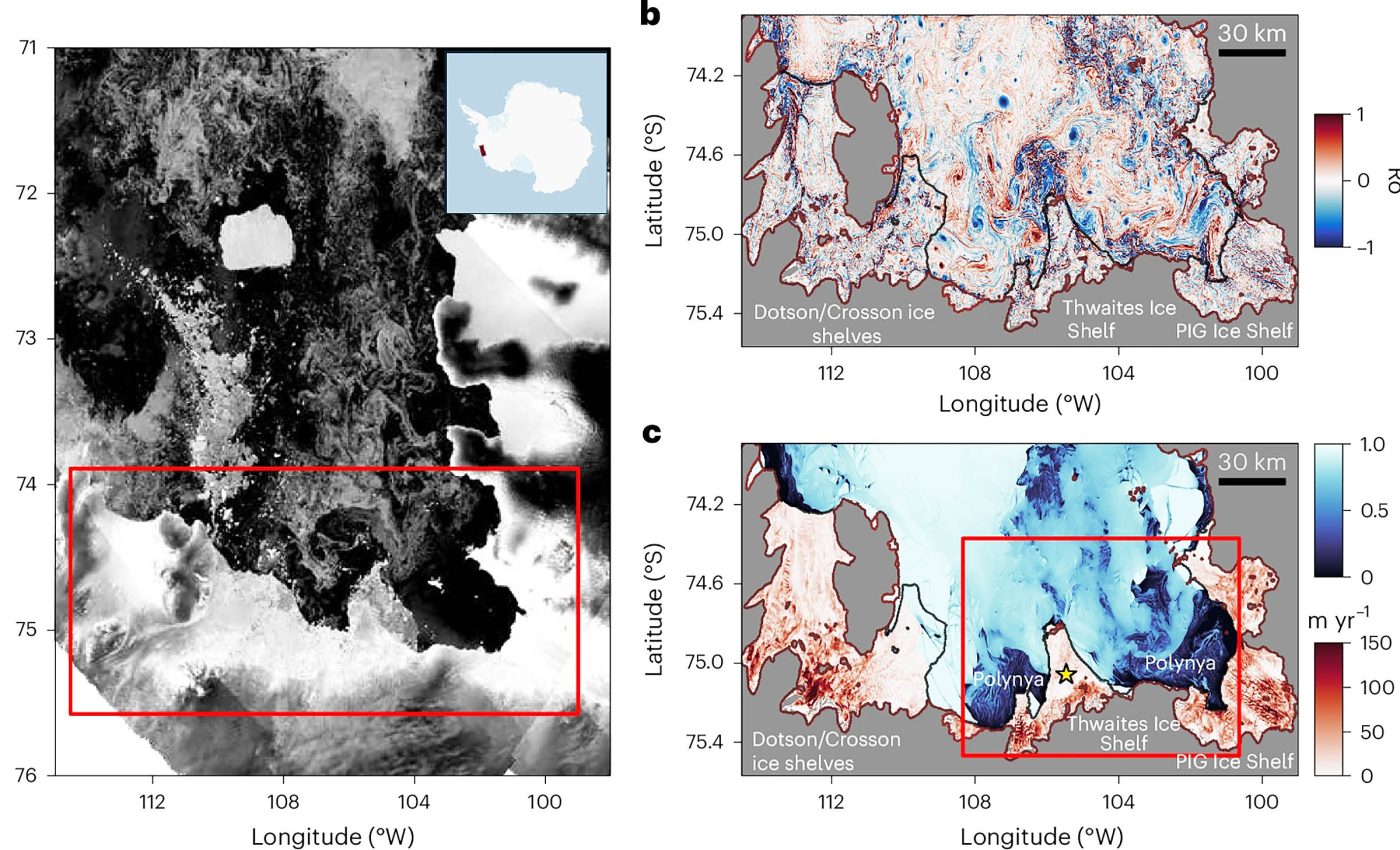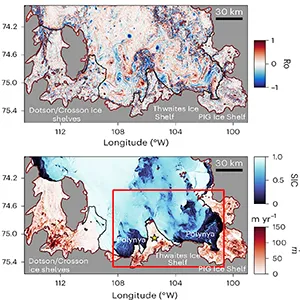
Ocean storms are melting Antarctica's ice from below
Antarctica looks serene from the surface. The ice spreads across the horizon with calm beauty. Yet, hidden movements below tell a different story.
Scientists now reveal that the ocean beneath the vast Antarctic ice shelves behaves with swift energy.
These motions act like storms and damage the ice from below. The new findings reshape our understanding of sea-level rise and the pace of change in Earth’s coldest region.
Sudden bursts of ocean activity
Researchers from UC Irvine and NASA’s Jet Propulsion Laboratory (JPL) examined melt patterns under major Antarctic ice shelves. They focused on short events that last only days.
This short window allowed them to link sudden bursts of ocean activity with sharp ice melt spikes. Their study targeted the Thwaites and Pine Island glaciers.
These glaciers sit within the Amundsen Sea Embayment, a region already known for rapid change.
The team used advanced models and moored sensors to observe features called submesoscales. These motions span 0.6 to 6 miles.
Their size seems small compared to the vast ocean, yet they pack strong currents that lift warm water up toward the ice.
“In the same way hurricanes and other large storms threaten vulnerable coastal regions around the world, submesoscale features in the open ocean propagate toward ice shelves to cause substantial damage,” explained Mattia Poinelli, lead author of the publication.
He noted that these currents push warm water inside the cavities beneath the ice.
Heat rising under Antarctic ice
The study showed that these tiny motions trigger intense melting from below. The warm water reaches the base of the ice shelf. It then lifts toward the ice surface within the cavity.
This process melts ice quickly. The meltwater itself changes the ocean structure and creates new unstable layers.
“Submesoscale activity within the ice cavity serves both as a cause and a consequence of submarine melting,” Poinelli said.
Meltwater forms sharp fronts that strengthen the same features that caused the melt. This cycle repeats and grows stronger.
The researchers found that these short events shape nearly a fifth of the total melt patterns each season. Some events raise melt rates almost threefold within hours.
The models matched direct observations from moorings placed around Antarctica. Other tools recorded similar bursts of warmth and salinity changes at the same depths.
Fragile regions are emerging
The team highlighted one region with special risk. “The region between the Crosson and Thwaites ice shelves is a submesoscale hot spot,” Poinelli said.
The shape of the seafloor acts like a natural trap. It gathers strong currents and directs them beneath the ice. This geography turns the area into a point of weakness.
The floating tongue of the Thwaites ice shelf sits in this zone. Its position makes it highly exposed to fast moving warm water.
Such processes are crucial for global sea-level forecasts. The West Antarctic Ice Sheet holds enough ice to raise sea levels by up to three meters. Warmer waters could make these submesoscale features more common.
Longer stretches of open water and less sea ice during warm periods give these tiny storms more room to grow.
Shifts in climate models
Poinelli stressed the broader message. “These findings demonstrate that fine oceanic features at the submesoscale – despite being largely overlooked in the context of ice-ocean interactions – are among the primary drivers of ice loss.”
These rapid events behave like weather inside the ocean. Yet many climate models track changes at scales that miss these short lived bursts. This study shows that prediction tools must include these motions for better accuracy.
“Initially, I was just trying to understand the observations using model output so we can say, ‘This is how you explain the data,’” said study co-author Yoshihiro Nakayama.
“But now that our model matches the data so well, we can go an extra step. We can extrapolate further to say there’s weatherlike storms hitting and melting the ice.”

Tracking Antarctic ice melt
“This study and its findings highlight the urgent need to fund and develop better observation tools, including advanced oceangoing robots that are capable of measuring suboceanic processes and associated dynamics,” noted study co-author Eric Rignot.
Better tools will help track these fleeting but powerful events in real time. Antarctica may look peaceful, but the ocean below its ice shelves holds fast motions that shape our global future. These hidden storms reveal how small features can drive large changes.
As Earth warms, these forces could grow stronger and push ice loss to new levels. Understanding them now gives us a clearer view of the future that lies ahead.
The study is published in the journal Nature Geoscience.
—–
Like what you read? Subscribe to our newsletter for engaging articles, exclusive content, and the latest updates.
Check us out on EarthSnap, a free app brought to you by Eric Ralls and Earth.com.
—–













